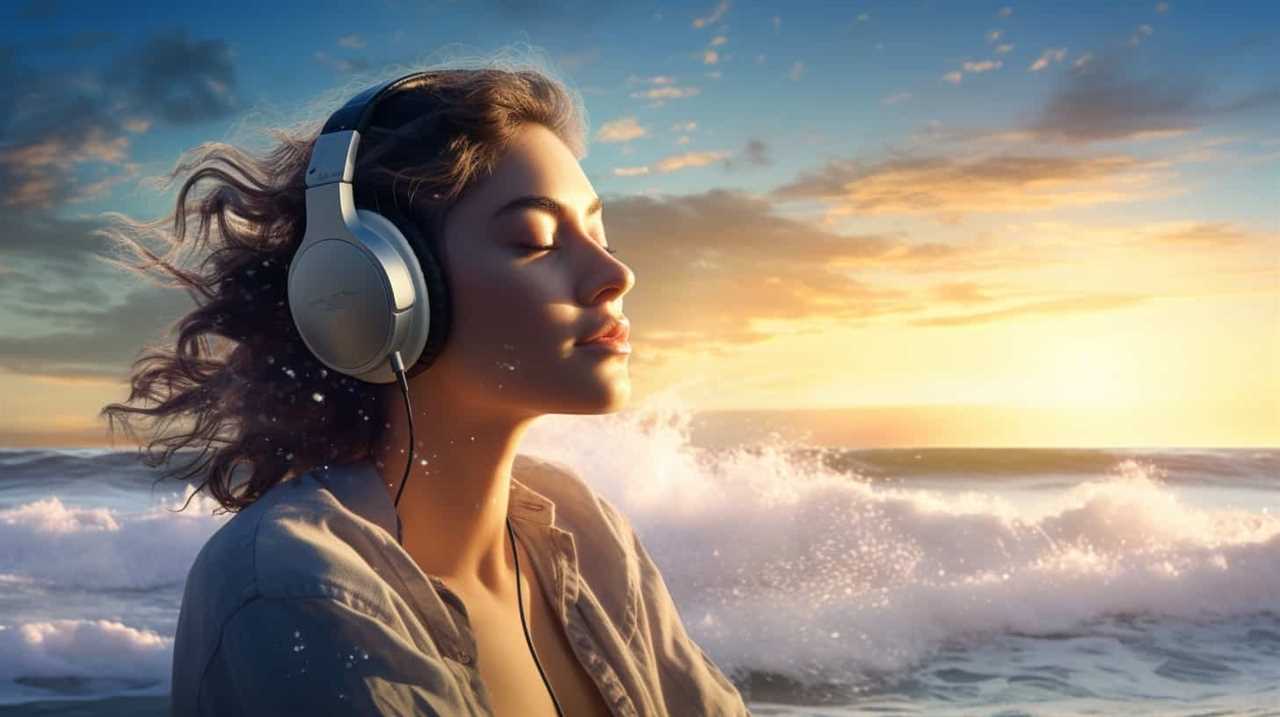Welcome to our exploration of the fascinating world of recording and analyzing underwater sounds.
In this article, we’ll delve into the intricate process of capturing and interpreting the enigmatic sounds that echo beneath the ocean’s surface.
With our expert knowledge and cutting-edge technology, we aim to unravel the secrets hidden within these aquatic melodies.
Join us as we navigate the challenges and limitations of underwater acoustics, shedding light on this captivating field of study.

Key Takeaways
- Advanced recording and analysis techniques improve our understanding of underwater acoustics.
- Studying underwater sounds provides insights into underwater noise pollution.
- Precise analysis helps quantify the impact of noise pollution on marine ecosystems.
- Effective recording techniques contribute to a comprehensive understanding of underwater acoustic environments.
Understanding Underwater Acoustics
Our understanding of underwater acoustics has greatly improved through the use of advanced recording and analysis techniques.
By studying the sounds in the underwater environment, we’ve gained valuable insights into two crucial aspects: underwater noise pollution and marine mammal communication.
Underwater noise pollution refers to the excessive and disruptive sounds caused by human activities such as shipping, construction, and oil exploration. Through precise analysis, we can now quantify the impact of these noises on marine ecosystems and develop strategies to mitigate their effects.
Additionally, studying marine mammal communication has allowed us to decipher their complex vocalizations and understand their social behaviors. This knowledge is crucial for conservation efforts and maintaining the balance of marine ecosystems.

The importance of recording techniques lies in their ability to capture and analyze these underwater sounds, providing us with a deeper understanding of the underwater world.
The Importance of Recording Techniques
Recording techniques play a crucial role in gaining a deeper understanding of underwater sounds. To fully appreciate the importance of data collection in this field, it’s imperative to recognize the significance of employing effective recording techniques.
Here are three key reasons why recording techniques are essential:
-
Accurate and high-quality recordings provide valuable data for analysis, allowing researchers to study the intricate details of underwater soundscapes.

-
Signal processing techniques rely heavily on well-recorded data to extract meaningful information from the recorded signals. Without precise recordings, the effectiveness of any subsequent signal processing would be compromised.
-
Proper recording techniques enable the capture of a wide range of underwater sounds, including those with low amplitude or high frequency, resulting in a more comprehensive understanding of underwater acoustic environments.
Analyzing and Interpreting Ocean Sounds
To further our understanding of underwater sounds, we analyze and interpret the vast array of oceanic sounds that have been recorded. This process involves several steps, including underwater sound classification and the study of marine mammal communication.
Underwater sound classification allows us to categorize different types of sounds based on their frequency, duration, and amplitude. By identifying patterns and trends within these classifications, we can gain insights into the behaviors and activities of marine organisms.

Additionally, analyzing marine mammal communication is crucial for understanding their complex social structures and ecological roles. By studying the vocalizations of marine mammals, we can decipher their communication signals, such as mating calls, feeding signals, and warning sounds.
This knowledge not only contributes to our understanding of marine ecosystems, but also helps inform conservation efforts and mitigates the impact of human activities on marine life.
Equipment and Technology for Underwater Sound Recording
As we delve into the realm of underwater sound recording and analysis, it’s essential to explore the equipment and technology that enable us to capture and study these intriguing oceanic sounds.
To successfully record underwater sounds, we rely on advanced hydrophone technology, which is specifically designed to detect and capture sound waves in water.

The following are key components of underwater sound recording equipment:
-
Hydrophones: These specialized microphones are designed to be submerged in water and convert underwater sound waves into electrical signals.
-
Pre-amplifiers: These devices amplify the weak electrical signals from the hydrophones to ensure accurate recording and analysis.
-
Data recorders: These devices store the recorded signals for later analysis and processing.

Challenges and Limitations in Underwater Acoustic Analysis
One of the key challenges in underwater acoustic analysis is understanding the limitations of the equipment and technology used for capturing and studying these sounds. Achieving accurate and reliable results in this field requires careful consideration of various factors that can impact the analysis process. One major limitation is the presence of underwater noise pollution, which can interfere with the clarity of recorded sounds. This noise pollution, caused by human activities such as shipping, seismic surveys, and offshore construction, can mask or distort the target signals of interest. Another challenge is the complex nature of marine mammal communication, as their sounds can vary in frequency, duration, and intensity. Understanding these variations and their significance is crucial for interpreting and analyzing underwater acoustic data.
| Challenges | Limitations | Impacts |
|---|---|---|
| Underwater noise pollution | Interference with target signals | Reduced clarity and accuracy of analysis |
| Marine mammal communication | Variability in sound characteristics | Difficulty in interpretation and analysis |
| Equipment and technology limitations | Restricted frequency range and sensitivity | Incomplete capture of underwater sounds |
Frequently Asked Questions
How Deep Can Underwater Sounds Travel?
Underwater sounds can travel great distances, depending on various factors such as water temperature, salinity, and pressure. The effects of depth on sound transmission include changes in sound speed and attenuation.
What Are the Main Sources of Underwater Noise Pollution?
The main sources of underwater noise pollution include shipping vessels, seismic surveys, and underwater construction. Measuring and monitoring underwater noise levels is crucial to understanding its causes and impacts on marine ecosystems.
Can Underwater Sounds Be Used to Detect and Track Marine Animals?
Can underwater sounds be used to detect and track marine animals? Yes, underwater sound localization and acoustic monitoring techniques allow us to precisely analyze and identify the movements and behaviors of marine animals.

How Do Researchers Differentiate Between Different Types of Underwater Sounds?
We differentiate between different types of underwater sounds through underwater sound classification and acoustic signature analysis. These techniques allow us to analyze and categorize the unique characteristics of each sound, providing valuable insights for our research.
Are There Any Ethical Considerations in Recording and Analyzing Underwater Sounds?
There are ethical implications in recording and analyzing underwater sounds. We must consider the potential impact on marine life and ensure our methods are respectful and non-intrusive.
Conclusion
In conclusion, recording and analyzing underwater sounds is a complex process that requires understanding of underwater acoustics, advanced recording techniques, and sophisticated equipment.
By effectively capturing and analyzing ocean sounds, scientists can gain valuable insights into marine ecosystems and their inhabitants.

One interesting statistic is that approximately 90% of marine species rely on sound for communication, navigation, and finding food, highlighting the importance of underwater sound recording in studying and conserving marine environments.










